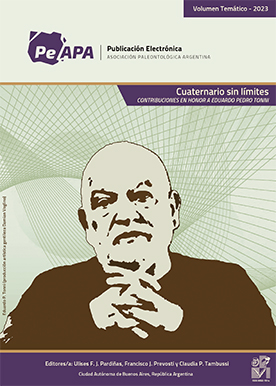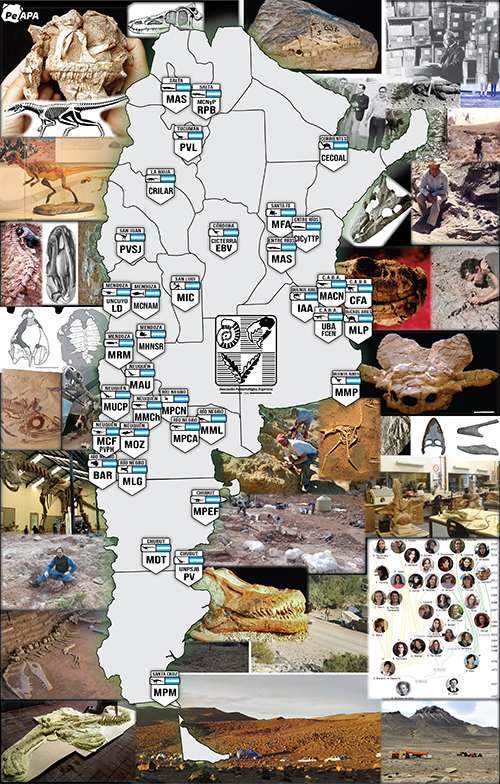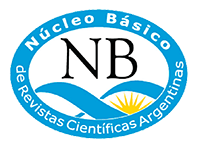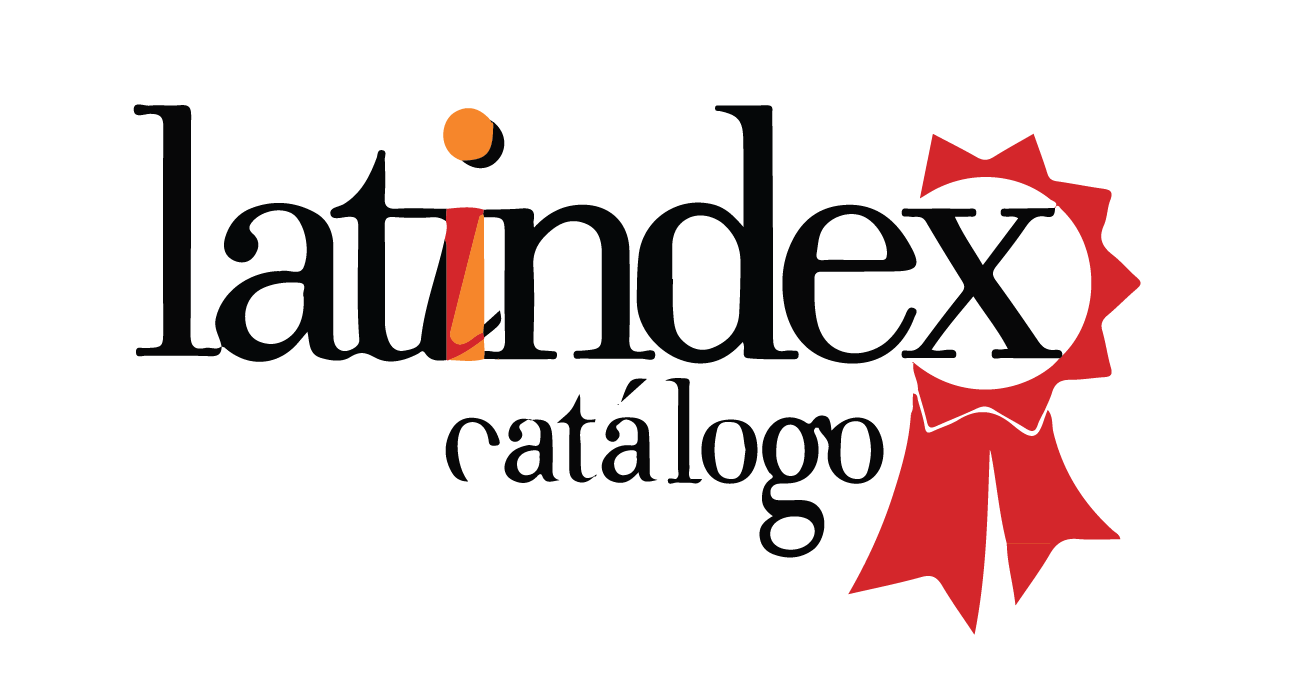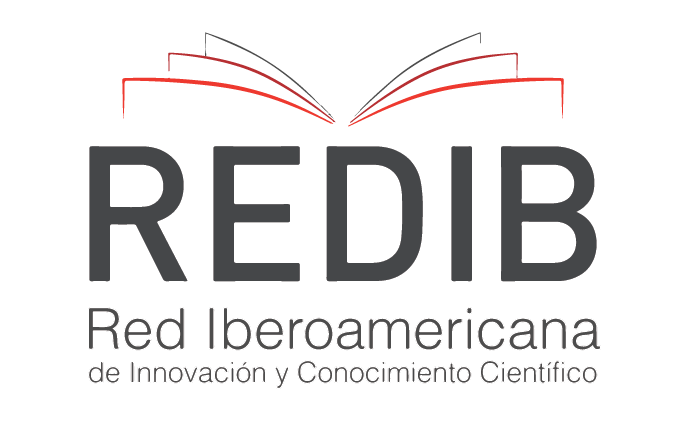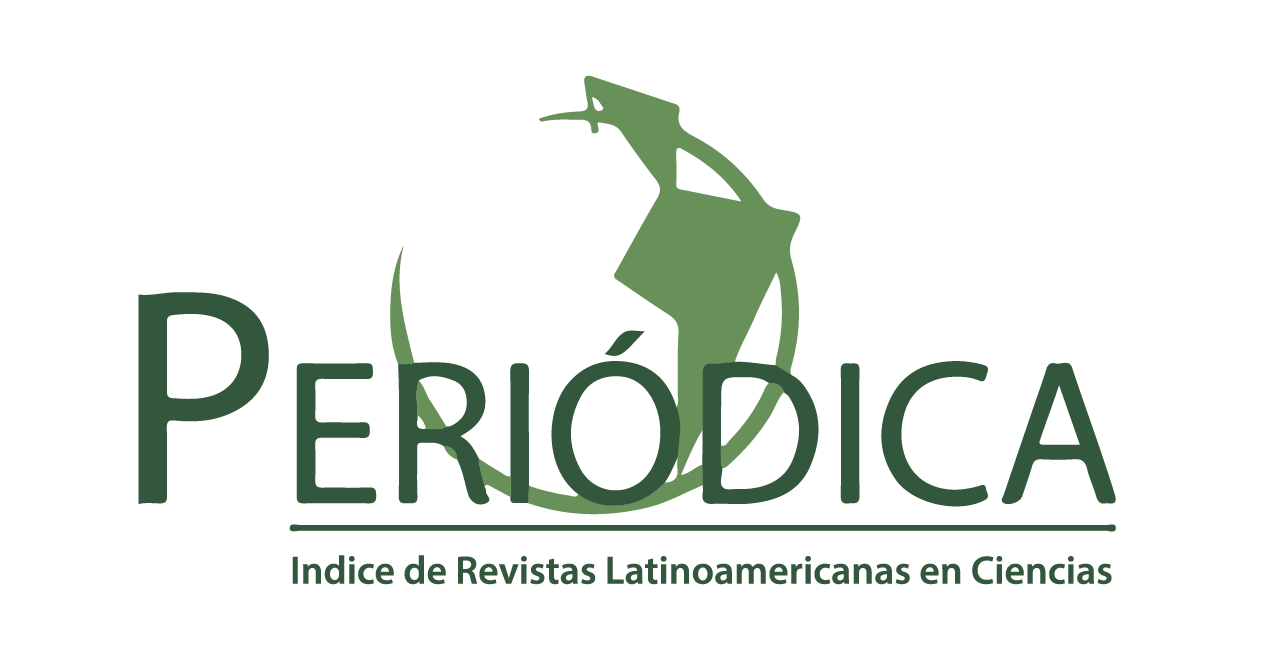VARIABILIDAD INTRAESPECÍFICA DEL GASTRÓPODO STRUTHIOLARIDO PERISSODONTA AMEGHINOI (IHERING, 1897), MIOCENO TEMPRANO, TIERRA DEL FUEGO, ARGENTINA
DOI:
https://doi.org/10.5710/PEAPA.24.07.2021.388Palabras clave:
Struthiolaridos, Perissodonta ameghinoi, Variabilidad intraespecífica, Mioceno, Tierra del Fuego, ArgentinaResumen
Los depósitos marinos del Mioceno temprano en Tierra del Fuego albergan un grupo de gasterópodos struthiolaridos que se destacan por su alta variabilidad morfológica. Desde finales del siglo 19 se interpretó que esta variabilidad reflejaba (1) un grupo de especies altamente diversificado en rápida evolución o (2) una única especie plástica caracterizada por una amplia variabilidad intraespecífica. El estudio morfológico de más de 100 ejemplares del género Perissodonta Martens recolectados en las formaciones fueguinas Carmen Silva, Viamonte e Irigoyen indica que parámetros significativos, como la forma del caparazón, la longitud de la espira y el número de ornamentaciones espirales y axiales (líneas espirales finas, cordones, tubérculos) varían continuamente dentro de una amplia gama de valores, favoreciendo una única especie plástica. Los especímenes topotipo de Perissodonta ameghinoi (Ihering), recolectados de la Formación Monte León del Mioceno temprano en la Patagonia, muestran una plasticidad de caracteres similar. Además, material de topotipo reciente de Perissodonta georgiana Strebel de las Islas Georgias del Sur, una especie considerada sinónimo muy cercano o junior del genotipo de la especie P. mirabilis (Smith), indica un grado similar de plasticidad. En consecuencia, los struthiolaridos fueguinos asignados previamente a Perissodonta ameghinoi; P. fueguina (Ihering) o P. densestriata (Ihering) se refieren en este trabajo a P. ameghinoi, un gasterópodo struthiolarido restringido al Mioceno temprano en Tierra del Fuego y Patagonia.
Referencias
Bedoya-Agudelo, E. L. (2019). Asociaciones de nanofósiles calcáreos del Paleoceno–Mioceno de Tierra del Fuego. Bioestratigrafía, Paleoecología y Paleooceanografía [Tesis Doctoral, Facultad de Ciencias Exactas y Naturales, Universidad de Buenos Aires]. Retreived from http://digital.bl.fcen.uba.ar/Download/Tesis.
Beu, A. G. (2009). Before the ice: biogeography of Antarctic Paleogene molluscan faunas. Palaeogeography, Palaeoclimatology, Palaeoecology, 284, 191–226.
Biddle, K. T., Uliana, M. A., Mitchum Jr., R. M., Fitzgerald, M. G., & Wright, R. C. (1986). The stratigraphy and structural evolution of the central and eastern Magallanes basin, southern south America. In P. A. Allen, & P. Homewood (Eds.), Foreland Basins (pp. 41–66). International Association of Sedimentologists, Special Publication 8.
Camacho, H. H. & Zinsmeister, W. J. (1989). La Familia Struthiolariidae Fisher, 1884 (Molusca, Gastropoda) y sus representantes en el Terciario Patagónico. Simposio Invertebrados Fósiles Del Cenozoico y 4º Congreso Argentino de Paleontología y Bioestratigrafía (pp. 99–110). Mendoza.
Codignotto, J. O. & Malumián, N. (1981). Geología de la región al Norte del Paralelo 54° s de la Isla Grande de Tierra del Fuego. Revista de la Asociación Geológica Argentina, 36, 44–88.
Dalziel, I. W. D. (1981). Back-arc extension in the southern Andes: a review and critical reappraisal. Philosophical Transactions of the Royal Society of London, Series A-Mathematical, Physical, and Engineering Sciences, 300(1454), 319–335.
Darwin, C. (1846). Geological observations on South America. Being the third part of the geology of the voyage of the Beagle, under the command of Capt. Fitzroy, R.N. during the years 1832 to 1836. Smith, Elder & Co., London.
del Río, C. J. (2002). Moluscos del Terciario marino. Geología y Recursos Naturales de santa Cruz. En M. J. Haller (Ed.), Geología y Recursos Naturales de Santa Cruz, Relatorio 15º Congreso Geológico Argentino. Asociación Geológica Argentina.
del Río, C. J. (2004). Tertiary marine molluscan assemblages of eastern Patagonia (Argentina): a biostratigraphic analysis. Journal of Paleontology, 78(6), 1097–1122.
del Río, C. J. (2021). Paleoclimate and changing composition of the Paleogene–Neogene shallow Molluscan Assemblages of Patagonia. Journal of South American Earth Sciences, 108. doi.org/10.1016/j.jsames.2021.103209
Feldmann, R. M., schweitzer, C. E., Casadío S., & Griffin, M. (2011). New Miocene decapoda (Thalassinidea, Brachyura) from Tierra del Fuego, Argentina: Paleobiogeographic implications. Annals of Carnegie Museum, 79, 91–123.
Galeazzi, J. S. (1998). structural and stratigraphic evolution of the western Malvinas Basin, Argentina. Bulletin of the American Association of Petroleum Geologists, 82, 596–636.
Genta Iturrería, S. & Griffin, M. (2018). A review of the south American members of the family Struthiolariidae Fischer. Publicación Electrónica de la Asociación Paleontológica Argentina 19(1), R52.
Griffin, M. & Nielsen, S. N. (2008). A revision of the type specimens of Tertiary molluscs from Chile and Argentina by d’Orbigny (1842), Sowerby (1846) and Hupé (1854). Journal of Systematic Palaeontology, 6, 251–316.
Ihering, H. von. 1897. Os molluscos dos terrenos terciarios da Patagonia. Revista do Museu Paulista, 2, 217–382.
Ihering, H. von. 1907. Les Mollusques fossiles du Tertiaire et du Crétacé superieur de lʼArgentina. Anales del Museo Nacional de Buenos Aires, serie 3, Tomo 7, 1–608.
Lamarck, J. B. (1816). Liste des objets représentés dans les planches de cette livraison. In Tableau encyclopédique et méthodique des trois règnes de la Nature. Mollusques et Polypes divers (pp. 1–16). Agasse, Paris.
López Cabrera, M. I. & Olivero, E. B. (2018). Morphological variability in the gastropod Perissodonta Martens (Struthiolarella) from the Early Miocene of Tierra del Fuego. Publicación Electrónica de la Asociación Paleontológica Argentina 19(1), R74.
Malumián, N., Camacho, H. H., & Gorroño, R. (1978). Moluscos del Terciario inferior (“Magallanense”) de la Isla Grande de Tierra del Fuego (República Argentina). Ameghiniana, 15(3–4), 265–284.
Malumián, N. & Olivero, E. B. (2005). El Oligoceno–Plioceno marino del río Irigoyen, costa atlántica de Tierra del Fuego, Argentina: Una conexión atlántico-pacífica. Revista Geológica de Chile, 32, 117–129.
Malumián, N. & Olivero, E. B. (2006). El Grupo Cabo Domingo, Tierra del Fuego: bioestratigrafía, paleoambientes y acontecimientos del Eoceno–Mioceno marino. Revista de la Asociación Geológica Argentina, 61, 139–160.
Martens, E. von. (1878). Einige Conchylien aus den kälteren Meeresgegenden der südlichen Erdhälfte. Sitzungsbericht der Gesellschaft naturforschender Freunde zu Berlin, 20–26.
Marwick, J. (1924). The Struthiolariidae. Transactions of the New Zealand Institute, 55, 161–190.
Morton, J. E. (1956). The evolution of Perissodonta and Tylospira (Struthiolariidae). Transaction of the Royal Society of New Zealand, 83(Part 3), 515–524.
Nielsen, S. N. (2005). Cenozoic Strombidae, Aporrhaidae, and Struthiolariidae (Gastropoda, Stromboidea) from Chile: their significance to the interpretation of southeast Pacific biogeography and climate. Journal of Paleontology, 79, 1120–1130.
Olivero, E. B. & López Cabrera, M. I. (2020). A new shallow-marine, high-latitude record of the trace fossil Macaronichnus in Miocene, reworked delta-front clinoform, Punta Basílica, Tierra del Fuego, Argentina. Ichnos. https://doi/10.1080/10420940.2020.1755854
Olivero, E. B., López Cabrera, M. I., & Reguero, M. (2015). Icnología de los depósitos fluviales de la Formación Cullen (Mioceno, Tierra del Fuego) y su relación con la Formación santa Cruz, (Mioceno) de Patagonia. 3º Simposio Latinoamericano de Icnología (pp. 60). Colonia del Sacramento, Uruguay.
Olivero, E. B. & Malumián, N. (2008). Mesozoic–Cenozoic stratigraphy of the Fuegian Andes, Argentina. Geologica Acta, 6, 5–18.
Olivero, E. B., Malumián, N., & Palamarczuk, S. (2003). Estratigrafía del Cretácico superior–Paleoceno del área de Bahía Thetis, Andes fueguinos, Argentina: acontecimientos tectónicos y paleobiológicos. Revista Geológica de Chile, 30, 245–263.
Olivero, E. B., Malumián, N., Palamarczuk, S., & Scasso, R. A. (2002). El Cretácico superior–Paleógeno del área del Río Bueno, costa atlántica de la Isla Grande de Tierra del Fuego. Revista de la Asociación Geológica Argentina, 57, 199–218.
Olivero, E. B. & Torres Carbonell, P. J. (2021). Stratigraphy and depositional architecture of the Viamonte Formation, Miocene, Tierra del Fuego, Argentina: the interplay between deep-marine transverse and longitudinal depositional systems. Revista de la Asociación Geológica Argentina, 78(2), 135–162. https://revista.geologica.org.ar/raga/article/view/244
Ortmann, A. E. (1902). Tertiary invertebrates. Volume 4, Palaeontology 1, Part 2. In W. B. scott (Ed.), Reports of the Princeton University Expedition to Patagonia, 1896–1899 (pp. 45–332). Pierpoint Morgan Publishing Foundation, Princeton.
Parodiz, J. J. (1996). The taxa of fossil Mollusca introduced by Hermann von Ihering. Annals of Carnegie Museum, 65, 183–296.
Parras, A. & Griffin, M. (2009). Darwin’s great Patagonian tertiary formation at the mouth of the río Santa Cruz: a Reappraisal. Revista de la Asociación Geológica Argentina, 64(1), 70–82.
Philippi, R. A. (1887). Los fósiles terciarios i cuartarios de Chile. F.A. Brockhaus, Leipzig, and Museo Nacional de Historia Natural, Santiago.
Powell, A. W. B. (1951). Antarctic and subantarctic Mollusca: Pelecypoda and Gastropoda, collected by the ships of the Discovery Committee during the years 1926–1937. Discovery Reports, 26, 47–196.
Smith, E. A. (1875). Description of some new shells from Kerguelen’s Island. Annals and Magazine of Natural History, 16, 67–73.
Steinmann, G. & Wilckens, O. (1908). Kreide-und Tertiärfossilien aus den Magellansländern gesammelt von der schwedischen Expedition 1895–1897. Arkiv för Zoologi, 4(6), 1–119.
Strebel, H. (1908). Die Gastropoden. In Wissenschaftliche Ergebnisse der Schwedischen Südpolar-Expedition 1901–1903 unter Leitung von Dr. Otto Nordenskjöld (pp. 1–111). Stockholm.
Torres Carbonell, P. J., Cao, S. J., González Guillot, M., Mosqueira González, V. M., Dimieri, L. V., Duval, F., & Scaillet, S. (2020). The Fuegian thrust-fold belt: From arc-continent collision to thrust related deformation in the southernmost Andes. Journal of South American Earth Sciences, 102, 102678. doi.org/10.1016/j.jsames.2020.102678
Torres Carbonell, P. J., Dimieri, L., & Olivero, E. B. (2011). Progressive deformation of a Coulomb thrust-wedge: the eastern Fuegian Andes thrust-fold belt. In J. Poblet & R. Lisle (Eds.), Kinematic evolution and structural styles of fold and thrust belts (pp. 123–147), Geological society, London, Special Publication, London.
Torres Carbonell, P. J. & Olivero, E. B. (2012). sand dispersal in the southeastern Austral Basin, Tierra del Fuego, Argentina: outcrop insights from Eocene channeled turbidite systems. Journal of South American Earth Sciences, 33, 80–101. doi.org/10.1016/j.jsames.2011.08.002
Torres Carbonell, P. J. & Olivero, E. B. 2019. Tectonic control on the evolution of depositional systems in a fossil, marine foreland basin: Example from the SE Austral Basin, Tierra del Fuego, Argentina. Marine and Petroleum Geology, 104, 40–60.
Torres Carbonell, P. J., Olivero, E. B., & Dimieri, L.V. (2008). Control en la magnitud de desplazamiento de rumbo del sistema Transformante Fagnano, Tierra del Fuego. Argentina. Revista Geológica de Chile, 35, 63–79.
Troncoso, N., Goethem von, J. L., & Troncoso, J. S. (2001). Contribution to the marine molluscan fauna of Kerguelen Islands, south Indian Ocean. Iberus, 19(1), 83–114.
Zinsmeister, W. J. & Camacho, H. H. (1980). Late Eocene struthiolariidae (Mollusca, Gastropoda) from Seymour Island, Antarctic Peninsula, and their significance to the biogeography of early Tertiary shallow-water faunas of the southern hemisphere. Journal of Paleontology, 54, 1–14.
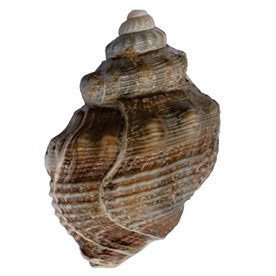
Descargas
Publicado
Número
Sección
Licencia

Los/las autores/as conservan los derechos de autor/a y garantizan a la revista el derecho de ser la primera publicación del trabajo licenciado bajo una licencia CC Attribution-NonCommercial 4.0 que permite a otros/as compartir el trabajo con el reconocimiento de la autoría y de la publicación inicial en esta revista.





